Mingkun Li
A Deep Learning Framework with Geographic Information Adaptive Loss for Remote Sensing Images based UAV Self-Positioning
Feb 22, 2025Abstract:With the expanding application scope of unmanned aerial vehicles (UAVs), the demand for stable UAV control has significantly increased. However, in complex environments, GPS signals are prone to interference, resulting in ineffective UAV positioning. Therefore, self-positioning of UAVs in GPS-denied environments has become a critical objective. Some methods obtain geolocation information in GPS-denied environments by matching ground objects in the UAV viewpoint with remote sensing images. However, most of these methods only provide coarse-level positioning, which satisfies cross-view geo-localization but cannot support precise UAV positioning tasks. Consequently, this paper focuses on a newer and more challenging task: precise UAV self-positioning based on remote sensing images. This approach not only considers the features of ground objects but also accounts for the spatial distribution of objects in the images. To address this challenge, we present a deep learning framework with geographic information adaptive loss, which achieves precise localization by aligning UAV images with corresponding satellite imagery in fine detail through the integration of geographic information from multiple perspectives. To validate the effectiveness of the proposed method, we conducted a series of experiments. The results demonstrate the method's efficacy in enabling UAVs to achieve precise self-positioning using remote sensing imagery.
MaskCL: Semantic Mask-Driven Contrastive Learning for Unsupervised Person Re-Identification with Clothes Change
May 23, 2023



Abstract:This paper considers a novel and challenging problem: unsupervised long-term person re-identification with clothes change. Unfortunately, conventional unsupervised person re-id methods are designed for short-term cases and thus fail to perceive clothes-independent patterns due to simply being driven by RGB prompt. To tackle with such a bottleneck, we propose a semantic mask-driven contrastive learning approach, in which silhouette masks are embedded into contrastive learning framework as the semantic prompts and cross-clothes invariance is learnt from hierarchically semantic neighbor structure by combining both RGB and semantic features in a two-branches network. Since such a challenging re-id task setting is investigated for the first time, we conducted extensive experiments to evaluate state-of-the-art unsupervised short-term person re-id methods on five widely-used clothes-change re-id datasets. Experimental results verify that our approach outperforms the unsupervised re-id competitors by a clear margin, remaining a narrow gap to the supervised baselines.
Unsupervised Long-Term Person Re-Identification with Clothes Change
Feb 08, 2022
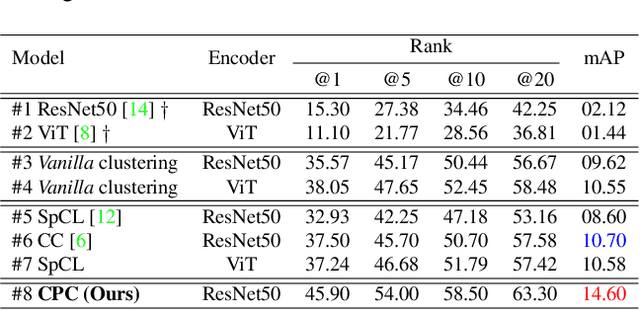
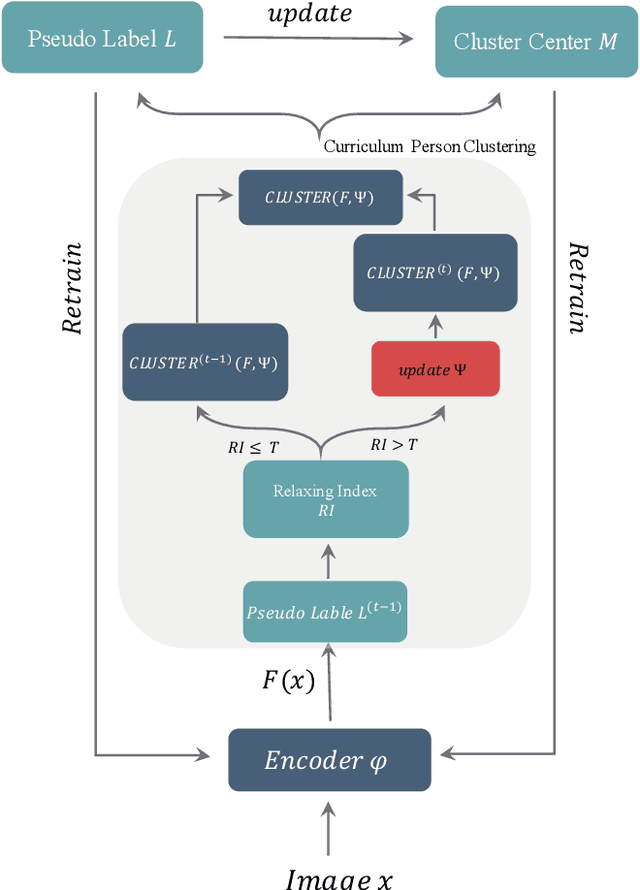
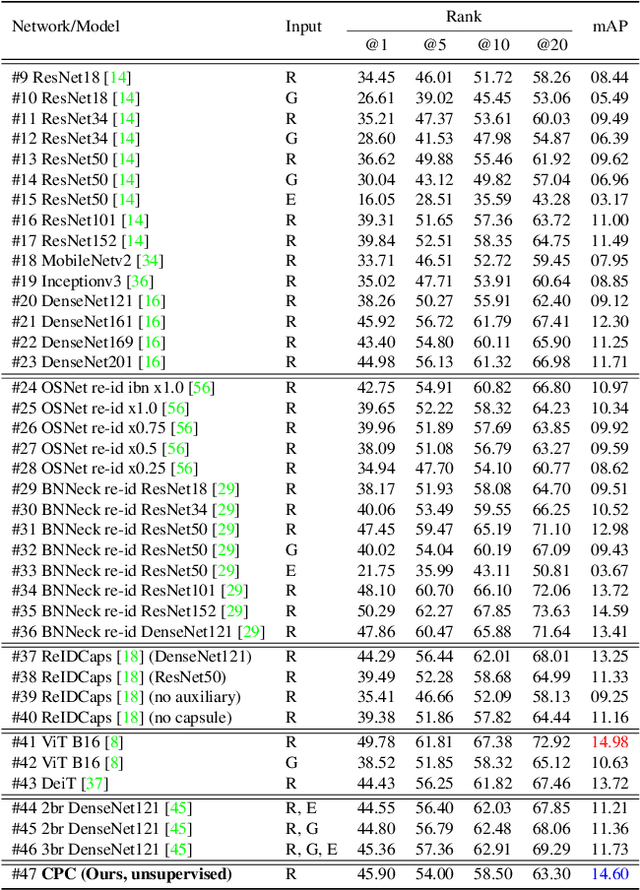
Abstract:We investigate unsupervised person re-identification (Re-ID) with clothes change, a new challenging problem with more practical usability and scalability to real-world deployment. Most existing re-id methods artificially assume the clothes of every single person to be stationary across space and time. This condition is mostly valid for short-term re-id scenarios since an average person would often change the clothes even within a single day. To alleviate this assumption, several recent works have introduced the clothes change facet to re-id, with a focus on supervised learning person identity discriminative representation with invariance to clothes changes. Taking a step further towards this long-term re-id direction, we further eliminate the requirement of person identity labels, as they are significantly more expensive and more tedious to annotate in comparison to short-term person re-id datasets. Compared to conventional unsupervised short-term re-id, this new problem is drastically more challenging as different people may have similar clothes whilst the same person can wear multiple suites of clothes over different locations and times with very distinct appearance. To overcome such obstacles, we introduce a novel Curriculum Person Clustering (CPC) method that can adaptively regulate the unsupervised clustering criterion according to the clustering confidence. Experiments on three long-term person re-id datasets show that our CPC outperforms SOTA unsupervised re-id methods and even closely matches the supervised re-id models.
Hybrid Contrastive Learning with Cluster Ensemble for Unsupervised Person Re-identification
Jan 28, 2022
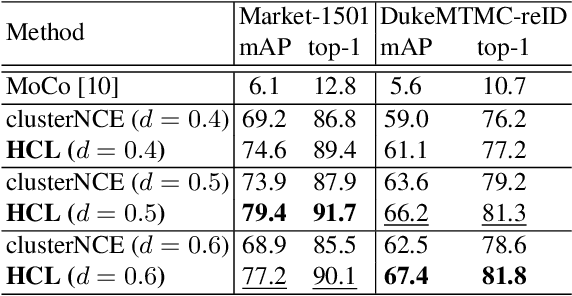
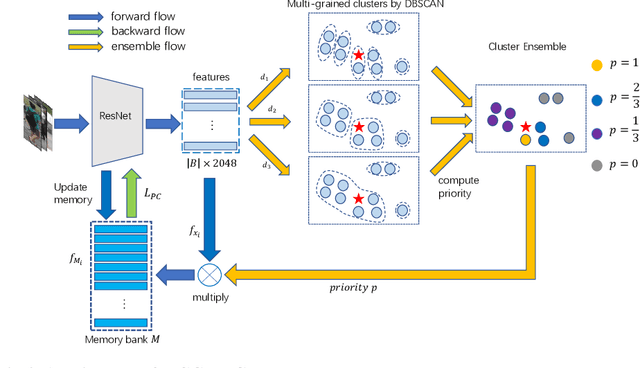
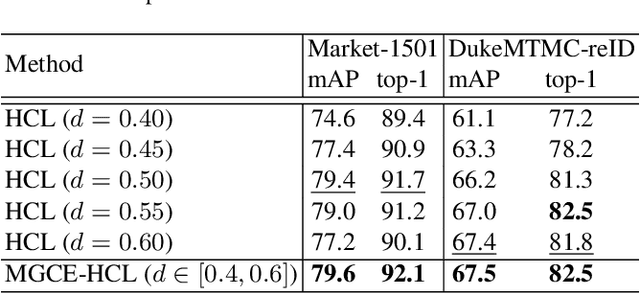
Abstract:Unsupervised person re-identification (ReID) aims to match a query image of a pedestrian to the images in gallery set without supervision labels. The most popular approaches to tackle unsupervised person ReID are usually performing a clustering algorithm to yield pseudo labels at first and then exploit the pseudo labels to train a deep neural network. However, the pseudo labels are noisy and sensitive to the hyper-parameter(s) in clustering algorithm. In this paper, we propose a Hybrid Contrastive Learning (HCL) approach for unsupervised person ReID, which is based on a hybrid between instance-level and cluster-level contrastive loss functions. Moreover, we present a Multi-Granularity Clustering Ensemble based Hybrid Contrastive Learning (MGCE-HCL) approach, which adopts a multi-granularity clustering ensemble strategy to mine priority information among the pseudo positive sample pairs and defines a priority-weighted hybrid contrastive loss for better tolerating the noises in the pseudo positive samples. We conduct extensive experiments on two benchmark datasets Market-1501 and DukeMTMC-reID. Experimental results validate the effectiveness of our proposals.
Cluster-guided Asymmetric Contrastive Learning for Unsupervised Person Re-Identification
Jun 15, 2021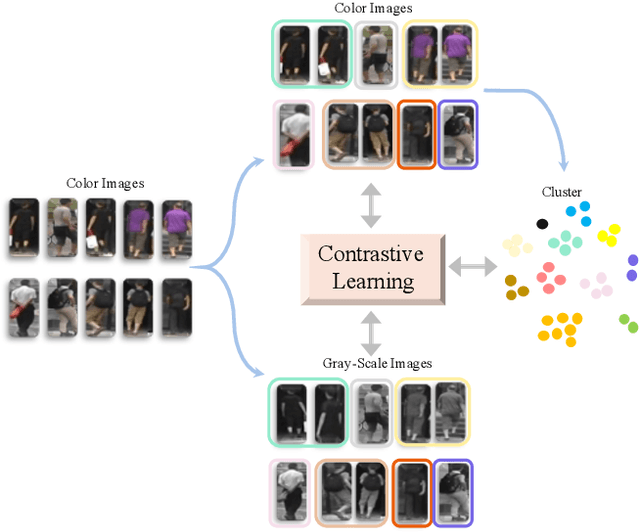
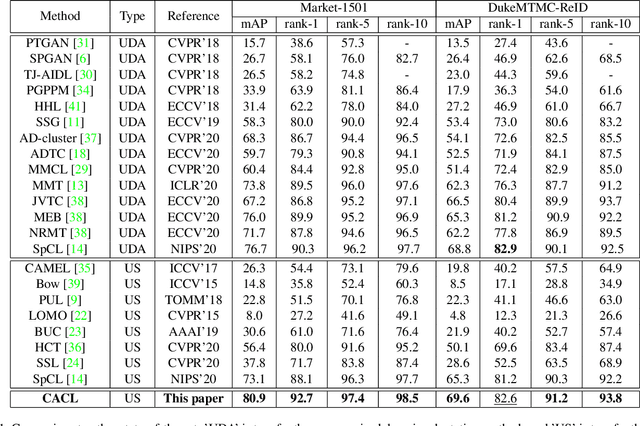
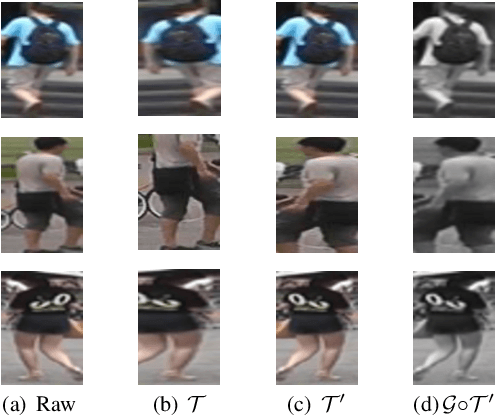
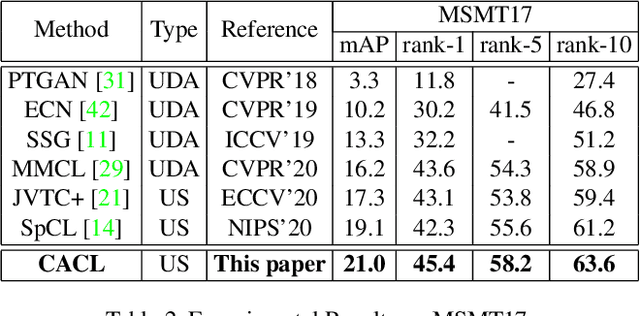
Abstract:Unsupervised person re-identification (Re-ID) aims to match pedestrian images from different camera views in unsupervised setting. Existing methods for unsupervised person Re-ID are usually built upon the pseudo labels from clustering. However, the quality of clustering depends heavily on the quality of the learned features, which are overwhelmingly dominated by the colors in images especially in the unsupervised setting. In this paper, we propose a Cluster-guided Asymmetric Contrastive Learning (CACL) approach for unsupervised person Re-ID, in which cluster structure is leveraged to guide the feature learning in a properly designed asymmetric contrastive learning framework. To be specific, we propose a novel cluster-level contrastive loss to help the siamese network effectively mine the invariance in feature learning with respect to the cluster structure within and between different data augmentation views, respectively. Extensive experiments conducted on three benchmark datasets demonstrate superior performance of our proposal.
 Add to Chrome
Add to Chrome Add to Firefox
Add to Firefox Add to Edge
Add to Edge